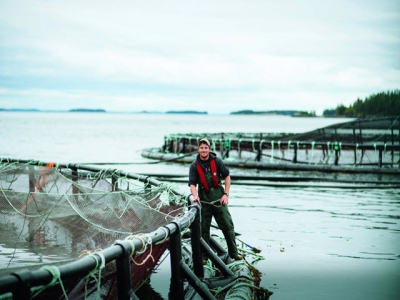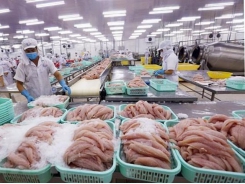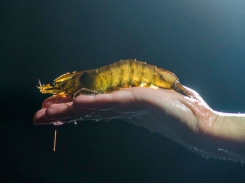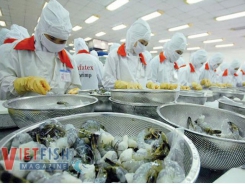Canadas aquaculture ventures fail to meet sustainability goals

According to researchers from Dalhousie University, there is virtually no evidence to support decades-long narratives about the sustainability of finfish aquaculture in Canada.
The study examines economic and sustainability indicators in Canada's aquaculture industry
The study, which was recently published in the journal Marine Policy, examined the progress Canada has made towards translating sustainable aquaculture policy goals into measurable outcomes. It describes 11 potential environmental, social and economic sustainability indicators identified by the Department of Fisheries and Oceans (DFO) in 2012 to advance the sustainable development of aquaculture in Canada.
"DFO reports on industry's compliance with environmental regulations as an indicator of the sustainability of aquaculture," says Inka Milewski, a research associate in the Department of Biology at Dalhousie, and the lead author for the study. "This approach assumes that current regulations are sufficient to cover the wide range of potential impacts fish farms can have on other species and the ecosystem, and that simply reporting the results of benthic monitoring, drug and pesticide use or dead fish are measures of environmental impacts or sustainability."
In 2015, the new federal Aquaculture Activity Regulations came into effect, which makes it mandatory for Marine finish operators in Canada to report drug and pesticide use. In 2017, marine finfish farms reported using 14.4 mt of antibiotics and 439 mt of hydrogen peroxide pesticides. According to Milewski, these numbers tell regulators and the public nothing about the potential sub-lethal, cumulative, and far-field impacts of serial exposure to antibiotics and pesticides on non-target species.
The study also used the result of more than 10 years of research focused on a single fish farm in Port Mouton Bay, Nova Scotia, to examine how Canada's national policy goals for sustainable aquaculture played out at the community level. Ruth Smith, the study's co-author and community research partner, notes that the Port Mouton case study demonstrates how Canada's new aquaculture regulations fail to capture the lobster catch decreases, eelgrass loss, copper contamination and nutrient loading reported in studies done in Port Mouton Bay.
The case study also found that DFO's social sustainability goal of generating meaningful employment in rural, remote and coastal communities has not occurred. Data from the Nova Scotia Department of Fisheries and Aquaculture shows that finfish production in Nova Scotia has increased 1000 percent between 1995 and 2017 but employs the same number of full-time people and there has been an 86 percent drop in part-time employment.
"Sustainability indicators should provide the public with concrete measures of government accountability on policy narratives and goals," says Milewski. "In the absence of meaningful measures of sustainability, Canada's declared aquaculture policy goals risk being reduced to mere political catchphrases."
Funding for the study was provided by the OceanCanada Partnership, a 6-year research initiative (2014-2020) funded by the Social Sciences and Humanities Research Council of Canada (SSHRC) that brings partners from across Canada together to study the challenges and opportunities facing Canada's oceans and coastal communities.
Related news
Tools

Phối trộn thức ăn chăn nuôi

Pha dung dịch thủy canh

Định mức cho tôm ăn

Phối trộn phân bón NPK

Xác định tỷ lệ tôm sống

Chuyển đổi đơn vị phân bón

Xác định công suất sục khí

Chuyển đổi đơn vị tôm

Tính diện tích nhà kính

Tính thể tích ao




 Land Based Sustainable Aquaculture Strategy - Part 1
Land Based Sustainable Aquaculture Strategy - Part 1  Seafood exports reached nearly 4 billion USD in…
Seafood exports reached nearly 4 billion USD in…